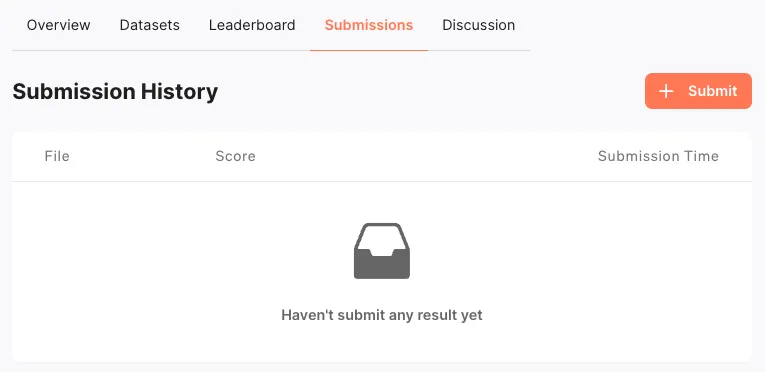Introducing Pond Competitions
Overview
Pond currently offers two interrelated platforms:
- Competition platform https://cryptopond.xyz/competitions/list
- Model platform
The Competition platform decentralizes model development, enabling researchers and developers to contribute to and enhance crypto-native AI models. It features well-designed machine learning tasks, curated datasets, and leaderboards for benchmarking model performance. Users can propose ML problems, inviting the community to transform these into high-quality competitions. By engaging developers from both Web2 and Web3, we accelerate the development of crypto-native AI models, creating a network of foundational models for the future of Crypto AI.
The Model platform serves as the foundation for blockchain-specific AI models. It hosts top-performing models from competitions, as well as those developed by Pond and collaborators. The platform boasts a low-latency, high-throughput data and feature engineering pipeline—capable of real-time processing when needed—to feed models for online inference. This allows competition-developed models to be swiftly deployed to production without concerns about data infrastructure—a common bottleneck in Web2, where data is often siloed within individual tech companies. Moreover, the platform provides robust, secure, and intuitive APIs for these models, making them easily accessible to projects and users.
These two platforms empower developers and users to truly own, control, and monetize their models, addressing concerns about AI centralization. For detailed instructions on using both platforms, please continue reading.
Competition Platform
In essence, the Competition platform resembles other ML competition platforms like Kaggle, making it familiar to most ML developers. The process begins with registration and login. Once logged in, you'll find a selection of competitions. Choose one that interests you, read its description and examine the included dataset, then train and submit your model to see where you rank on the leaderboard.
However, Pond's Competition platform distinguishes itself in several ways:
- It focuses on web3 data and problems.
- It aims to bring together ML model developers and projects with ML needs.
- Winning models not only receive prizes but will also be deployed to production (future version).
- Anyone can vote and invest in any ML task and share the winning model's revenue (future version).
Interested but not familiar with crypto? Don't worry! The platform is designed for anyone interested in ML. Regardless of your familiarity with web3, skill level, or background, you're more than welcome to push the frontier of Crypto AI by participating in the competitions.
- Sign up and log in
Visit cryptopond.xyz and navigate to "Competitions" to access the Competition platform. Click "Sign up" to register if it's your first time, or "Sign in" if you're returning.

- Pick a competition
The user interface is straightforward. From the available competitions, select one that piques your interest. While each competition is unique, they all share a common structure:
- An intuitive explanation of the problem and its impact.
- A concrete ML task, such as classifying malicious wallets based on their transaction history.
- A training dataset to develop models for solving the task.
- A test dataset without ground truth for making predictions and submitting results for evaluation.
- Model Development
- Read the competition details carefully.
- Understand the structure of training datasets. Each competition provides detailed descriptions of its datasets. Read these carefully before starting, and don't hesitate to contact the organizers with any questions.
- The platform provides data to develop your model but not the ML infrastructure. Use your preferred ML development platform.
- There are no restrictions on programming languages or ML frameworks. Feature engineering, model selection, and optimization are entirely up to you. Just submit the final results in the requested format.
- Submission Process

- Go to the Submissions tab and understand the structure of the test dataset:
- The test dataset has the same structure as the training dataset but without ground truth labels.
- Generate predictions using the test dataset for each entity of interest.
- Format results for submission:
- Each competition may have slightly different requirements for the submission file. Generally, the final result should be a CSV file with two columns: the first containing unique IDs of the entities of interest, and the second containing predictions for these entities.
- Submit results by uploading the file.
- Submit your best model.
- Evaluation Metrics
- Every competition or ML task will have pre-defined performance metrics, such as precision, recall, AUC, etc.
- Your model's predictions on the test dataset will be automatically compared with the ground truth, and the pre-defined metrics will be computed.
- Each task will have a primary metric and optional secondary metrics. The primary metric ranks all models, while secondary metrics break ties. Some tasks may also have guardrail metrics (e.g., recall must be greater than 0.6). Only models meeting the guardrails will be ranked.
- Community and Support
- Every competition has a discussion forum. We encourage healthy, professional discussions. We'll also check the forum periodically to answer questions.
- Other channels to reach the community:
- Telegram: https://t.me/pondxyz
- Discord: https://discord.gg/5RgJgPXsnF
Model Platform
We're working hard on it. Coming soon!
Updated about 14 hours ago
